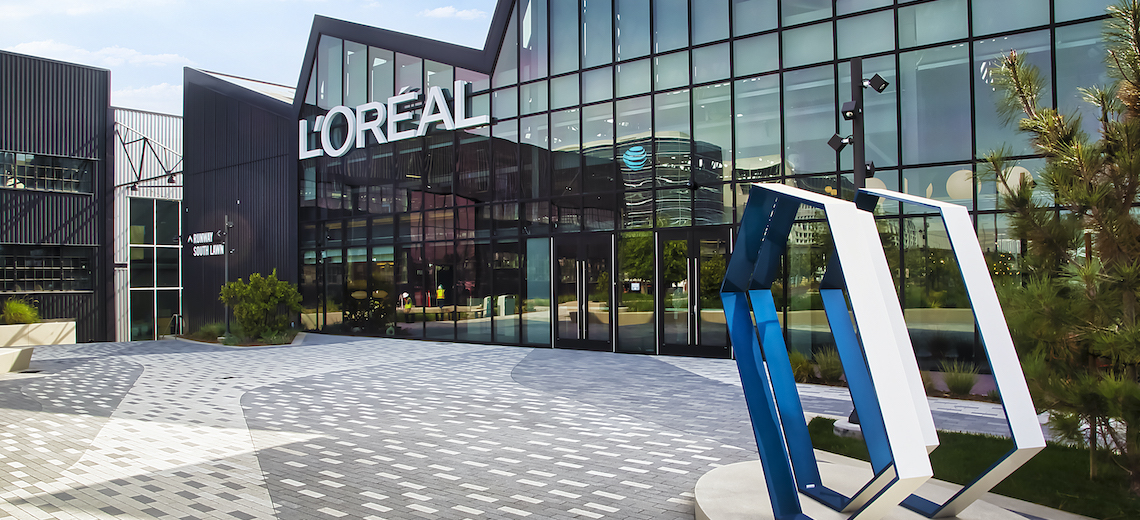Amid talk of a looming recession in the U.S., L’Oréal USA CEO David Greenberg said that beauty remains a strong category for growth.
During an interview with Glossy last week for the opening of L’Oréal’s L.A. headquarters, Greenberg talked about the prospects for beauty as the debate over a possible U.S. recession continues. In addition, he discussed ongoing big-picture effects on the beauty industry stemming from the pandemic, such as the Great Resignation, supply chain struggles and disruptions in sales channels.
“I’d say we are born optimists, and we’re pretty bullish on beauty,” he said. “Could there be a recession? I suppose. Will it impact beauty the way it might impact other categories? I don’t think so.”
As the U.S. economy hit a second quarter of negative growth and some lawmakers express alarm over the effects of the Fed’s interest rate hikes on the economy, business experts and pundit economists are divided: Some are saying a recession is already here or imminent, while UBS predicts a “60%” chance of there being one. Others say it is “not likely.”
But beauty spending is still strong. L’Oréal Group’s sales in North America across all brands grew by 10.7% in the first half of 2022, according to the company’s H1 financial report released on July 28.
“Beauty has always been very resilient,” said Greenberg, who also highlighted the fact that the U.S. added 528,000 jobs in July, bringing the unemployment rate down to 3.5%. He noted that slowing inflation and decreasing gas prices are also good signs.
“We’re a very agile company, despite our size, so we’ll react to things. But for now, it’s a foot on the gas pedal and we’re very optimistic,” he said.
As reports show that consumers are cutting back on spending due to inflation, Greenberg said that issues of excess inventory being faced by retailers like Walmart and Target are not dramatic in the beauty category. Retailers “took on too much inventory of hard goods” in categories “that people were buying during Covid,” such as furniture and TVs. With beauty products, the situation is “quite the contrary,” he said. “I don’t think we’re seeing more promotion,” when it comes to beauty. “If you want patio furniture at a major mass retailer, it’s probably on sale. But not beauty products.”
Supply chain challenges caused by the pandemic have also eased, he said, noting that “most of the difficulties are behind us.”
At the height of the supply chain slowdown, “we made constant adjustments,” said Greenberg.
“We leveraged our manufacturing facilities to support product lines that they weren’t manufacturing, prior to [the supply chain crisis]. We were making products in Europe to bring to the U.S. that we hadn’t been doing before,” he said. He added that, in some cases, brands reformulated products to respond to raw ingredient shortages.
For retail sales channels, the pandemic e-commerce surge has not created a permanent shift online.
“Brick-and-mortar is still dominant,” said Greenberg. At the same time, he said the company has “invested enormously to have the right infrastructure to support consumers’ desires to buy online, whether they buy from our own brand websites, buy on a pureplay, [buy on] a website like Amazon or buy from a retailer dot-com. We’re agnostic about where that happens, and we just want the consumer experience to be the best it can be.”
With U.S. job growth still strong, he said that the company’s strategy to retain talent is “a value proposition that’s attractive for people, which means a culture people want to be a part of.” This involves “connecting with the people that you work with,” as well as “competitive pay and benefits,” educational opportunities and “a work environment that’s appealing and attractive.”
“At L’Oréal, we never had the Great Resignation,” he said.
As for the overall beauty landscape, “In times like this, consumers are going to be increasingly discerning,” he said. “We have to be more relevant and more desirable than ever. We have to be absolutely discoverable wherever the consumer is, and we have to work that much harder to have the right value proposition for the consumer.”




